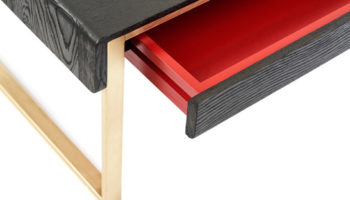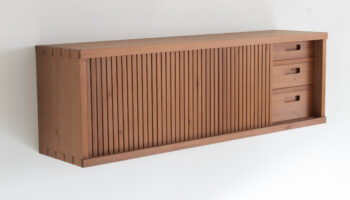Form Following Function in the Library: City and Cumulus by Carl Hagerling
Just yesterday, I was reading a concrete poem by George Herbert that appeared on the page like of a pair of wings. You might remember concrete poems from grade school, the most notable being poems in the shape of hearts or elephants or other equally cute things. But behind a concrete poem (a good one, probably not one that looks like a Valentine), there exists a deep design philosophy: that of form following function.
This is an especially interesting aspect of bookshelf design, for me at least, since it makes me question what type of library a certain design should contain. In my ideal library, I have tomes arranged to their appropriate bookshelves. Hallucinogenic books in playful, colorful shelving; serious books in somber, geometric shelving; and so on ad infinitum. Luckily, more and more designers are addressing the book, so my oneiric library is shaping up quite beautifully.
City. Designed by Designed by Carl Hagerling.
, for example, presents book lovers with City and Cumulus, two wall-mounted shelves that create a space for housing certain types of reading. Since I began with concrete poetry, I'll begin here with City-concrete being a driving force behind the growth of metropolises, especially in buildings with a vertical drive. The black cityscape of Hagerling's City serves as both a backdrop and an edge, cradling books in a veritable sandwich of skyline.
Given the number of excellent novels about the city, I am inclined to reserve this bookshelf for such explorations of modernity: Carlo Emilio Gadda's That Awful Mess, Ernest Hemingway's The Sun Also Rises, and Steven Millhauser's Martin Dressler immediately come to mind. And City works well visually once it's actually got books lined up within it, because the vertical lines of the standing books add to the urban architecture, acting as the very pieces of geometry that make up a skyscraper-riddled downtown.
Cumulus. Designed by Carl Hagerling.
The stuff of Cumulus will appeal to other readers-those who enjoy ethereal fiction or weather-related nonfiction, admirers of anything atmospheric or meteorological. Of course, part of the visual interest with Hagerling's Cumulus derives from the juxtaposition of hard and soft elements. The books interrupt the swooping silhouettes of clouds, bringing a hard scientific edge to an otherwise curvy romantic space.
Via Bookshelf Blog.





Leave a Reply